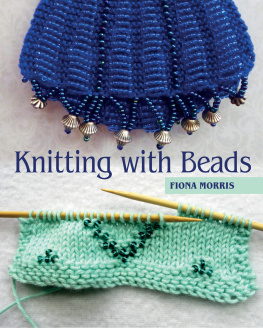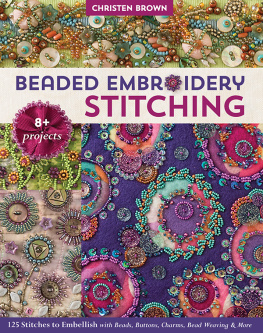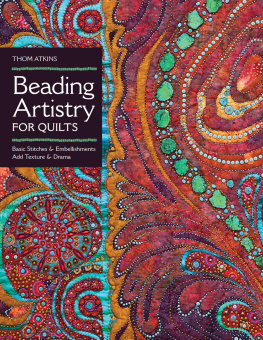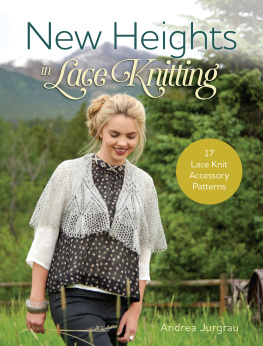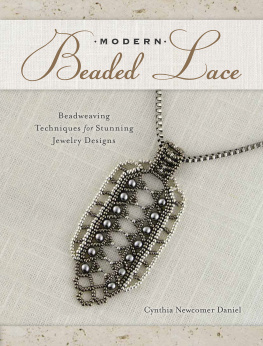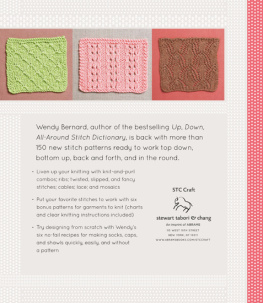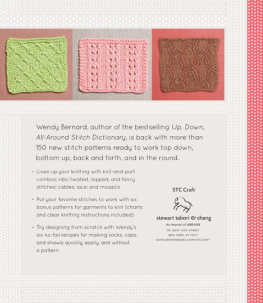Knitting with Beads
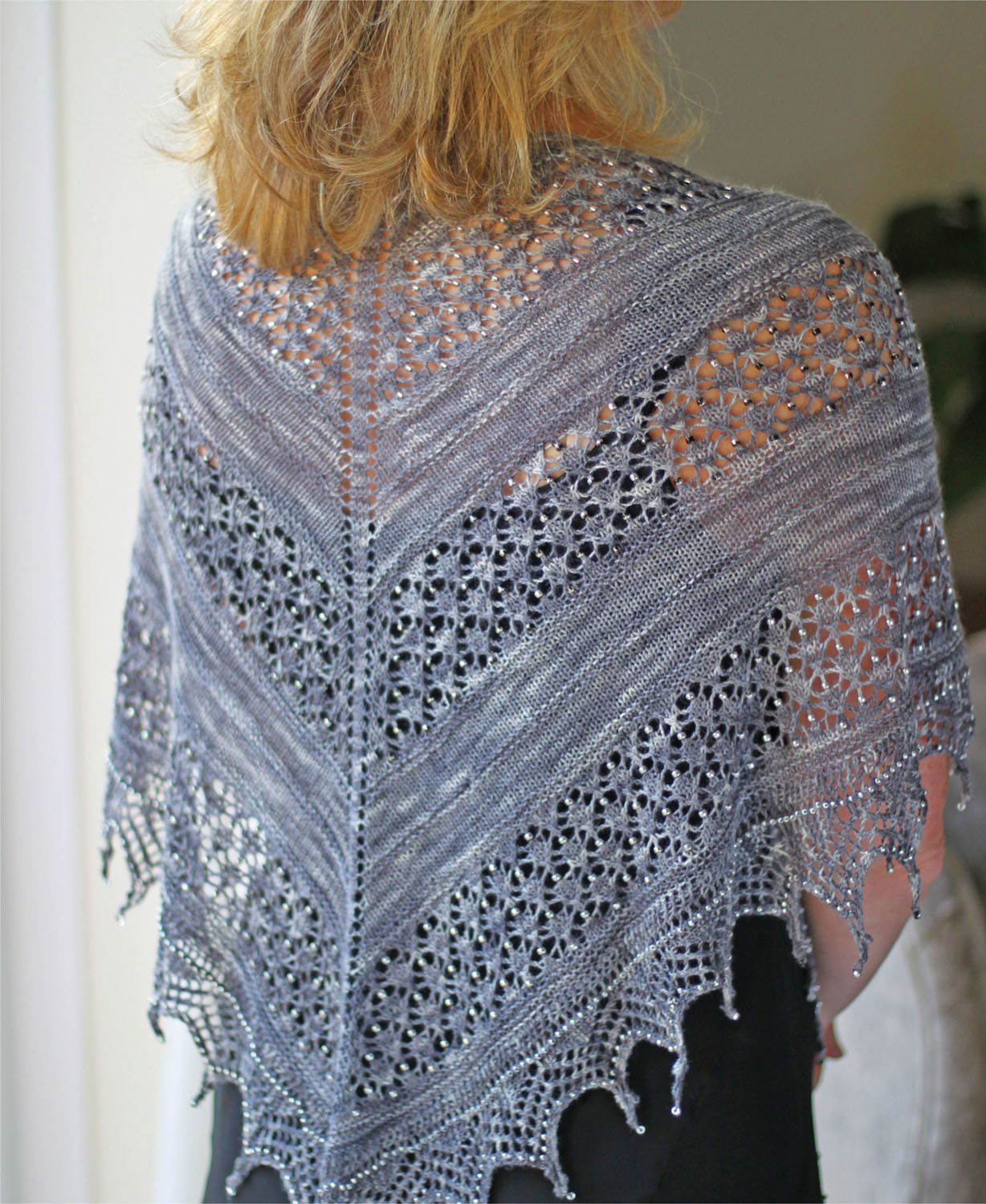
Knitting with Beads
FIONA MORRIS

THE CROWOOD PRESS
First published in 2018 by
The Crowood Press Ltd
Ramsbury, Marlborough
Wiltshire SN8 2HR
www.crowood.com
This e-book first published in 2018
Fiona Morris 2018
All rights reserved. This e-book is copyright material and must not be copied, reproduced, transferred, distributed, leased, licensed or publicly performed or used in any way except as specifically permitted in writing by the publishers, as allowed under the terms and conditions under which it was purchased or as strictly permitted by applicable copyright law. Any unauthorised distribution or use of thistext may be a direct infringement of the authors and publishers rights, and those responsible may be liable in law accordingly.
British Library Cataloguing-in-Publication Data
A catalogue record for this book is available from the British Library.
ISBN 978 1 78500 508 4
Frontispiece: Garter-and-Diamond Lace Shawl, knitted with Juniper Moon Farm Findley Dappled lace-weight yarn.
Tech editor: Heather Murray
Photographs: Dave Morris and Fiona Morris
Acknowledgements
There are a number of people I need to thank for their help and support while I wrote this book: my knitting friend and tech editor, Heather Murray; another knitting friend, Joanne Cummins, for doing some knitting; my friend Jan Wilson, who did all of the modelling; Cathy Scott of Stitchmastery, who helped to develop some new chart symbols to represent the techniques of knitting with beads; and Jacquie Kennedy of Liss Wools and all the knitters who visit this yarn store, where I often teach; but most of all my husband, Dave, who not only took many of the photographs but also did the cooking and housework so that I could work on this book.
CONTENTS
INTRODUCTION
I first came across beads in knitting in the early 1990s when I was attending a textiles course. One day, the tutor brought two vintage beaded items to class: a Victorian beaded, knitted purse and a beaded, crocheted misers purse. I had never seen this type of knitting before. When I got home, I did a search on the Internet and came across an American website called Baglady. The website (which is now defunct) had for sale booklets of patterns and materials that included the very fine needles needed for knitting amulet beaded purses. I purchased a pattern book and some needles, which started my knitting-with-beads adventures.
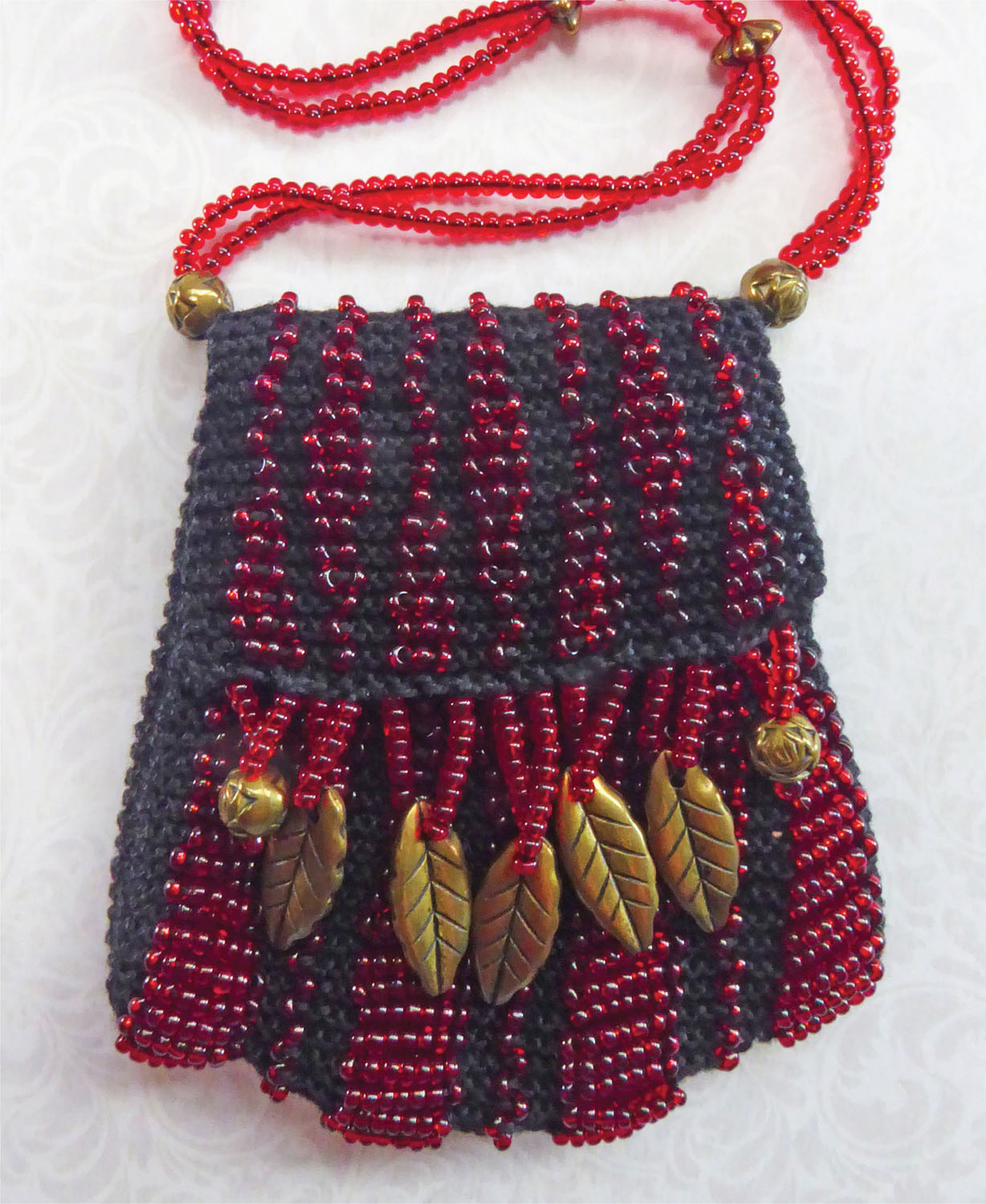
I found British suppliers for the fine cotton yarns and beads required and made my first amulet purse by following the instructions in the booklet. In an American knitting magazine, I found another pattern, which I knitted, and then I started to design my own purses. I designed several small amulet purses and then a couple of beaded, knitted evening bags. I also started playing around with beads and wire, and beads and nylon fishing line, to knit jewellery pieces.
Initially, I could not find much written about knitting with beads, until I was given an old copy of Mary Thomass Knitting Book by a friend; this book includes a brief history of knitting with beads and explains the difference between Bead Knitting and Beaded Knitting. I realized that the purses I was making were Beaded Knitting. I subsequently did make a couple of items of Bead Knitting, where a bead is knitted or purled through every stitch, to give a solid, beaded fabric.
Around 2000, another friend came across a book called Purls on the Pulse, about Norwegian Beaded-Knitting cuffs. The book was written in Norwegian but contained charts for all of the included Beaded Knitting. The cuffs were worked in garter stitch, with the beads being placed according to the chart between knit stitches when working the wrong-side rows, to produce a pattern on the right side of the knitting.
In the last ten to fifteen years, there have been quite a few developments in knitting with beads, particularly in conjunction with lace, all of which has added to my knowledge and enjoyment of knitting with beads.
I have written this book to encourage knitters of all levels to explore the various methods of including beads in their knitting. The book covers a variety of different techniques, with beads being threaded on to the yarn and beads being applied as you go along with a project. of this book features projects for a wide range of items, involving various techniques.
Part 1: Techniques
CHAPTER 1
TOOLS AND TECHNIQUES
Tools and materials
Beads
There is a large range of different types of beads available now, but not all of these beads are suitable to use in knitting. The size, shape and weight of the beads are all important factors to consider when selecting beads to knit with. Very large and heavy beads will be uncomfortable to wear, but very small beads or beads with very small holes may not be possible to thread on to the knitting yarn.
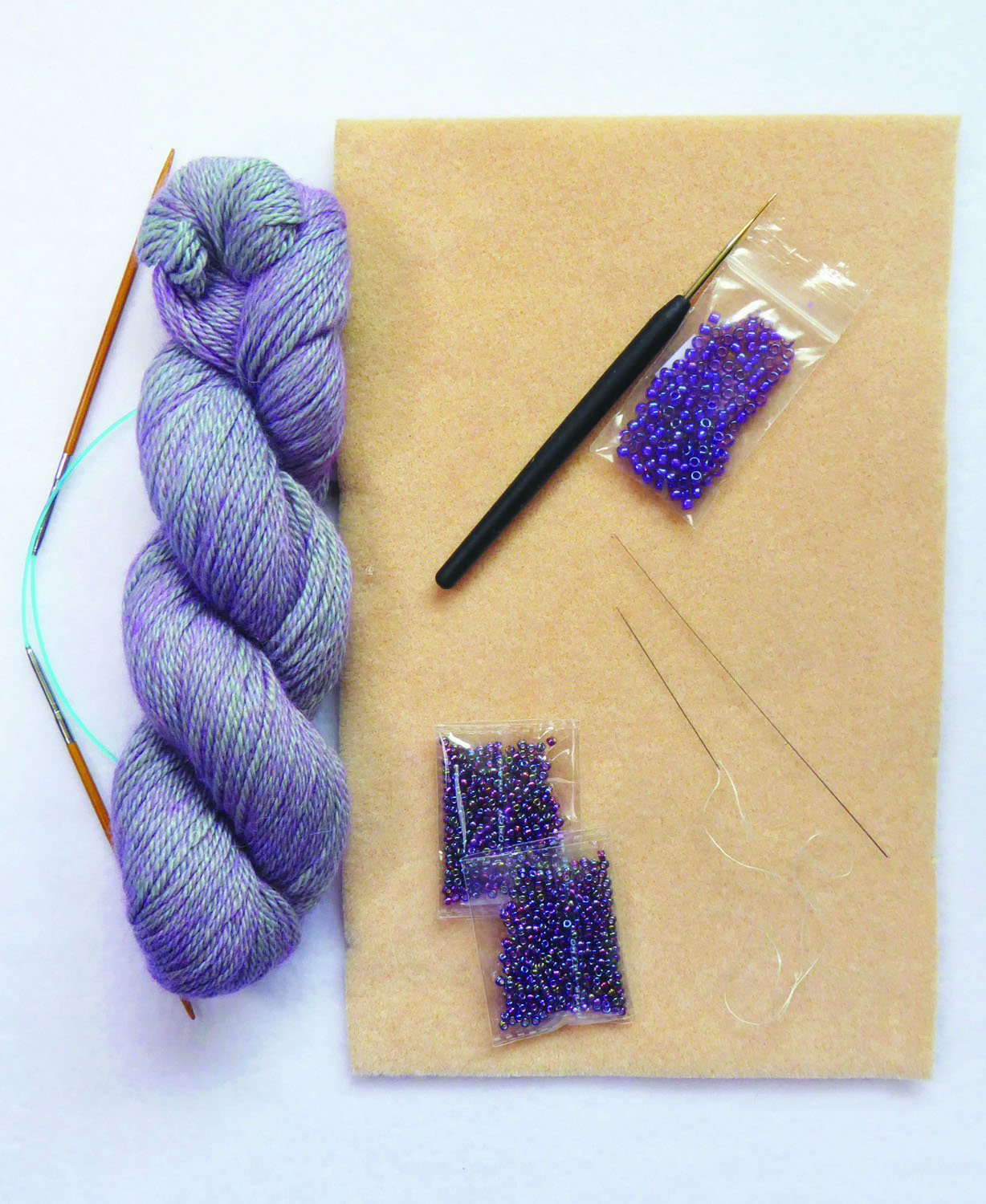
For most types of knitting with beads, glass seed beads work best. Seed beads have a rounded or cylindrical shape and a central hole. The beads come in a range of sizes; the smaller the size of the bead, the larger the beads size number. For example, a size 6 seed bead is much larger than a size 15 seed bead. The range of sizes available does vary from manufacturer to manufacturer. Size 11 or 10 beads are usually the smallest size of seed beads to be used in Beaded Knitting. Size 8 or 7 beads are a good size for a variety of uses, and size 6 or 5 beads generally make a bolder statement.
The main factor determining how well the beads will work is the relationship between the yarn being used and the size of the bead hole. The beads often need to be threaded on to the knitting yarn before knitting. Most seed beads will go on to fine lace-weight yarn or No. 8 Pearl Cotton yarn, but large beads may not work well on very fine yarns.
A general guide to yarn thickness and bead size
Beads of size 11 or 10 will go on to fine lace-weight yarn, No. 8 Pearl Cotton yarn and fine kid-mohair yarn.
Beads of size 8 or 7 will go on to most 4ply/fingering-weight and finer yarns.
Beads of size 6 or 5 will go on to fine DK-, sport- and 4ply/fingering-weight yarns.
The material that the beads are made from is also important. The larger the bead, the heavier the bead is, and this is especially noticeable for heavier materials such as glass. A fine yarn may not support the weight of a heavier bead.
Other types of beads can be used in knitting, such as crystals, bi-cone beads, bugle beads and metallic, wood, bone and plastic beads, to mention a few. Decorative beads can be used to embellish the knitting, but, if you want to work with the beads by using Beaded-Knitting techniques, the holes in the beads must be large enough for the beads to be threaded on to the knitting yarn.
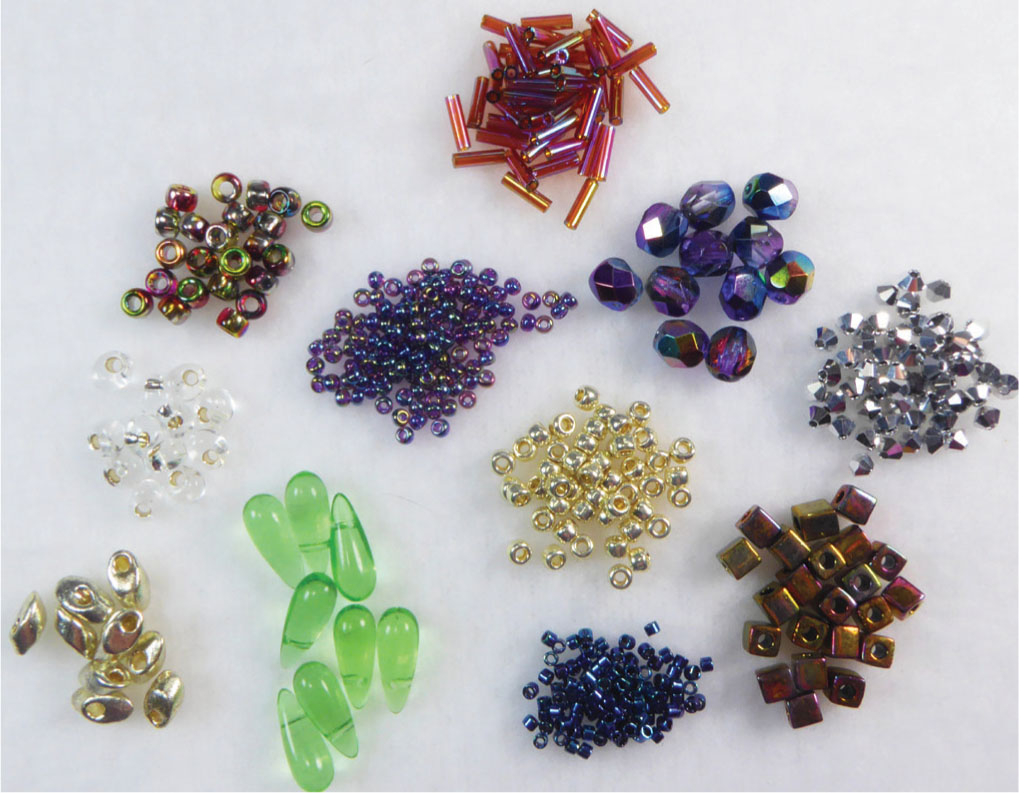
Fig. 1.1 A selection of different types of beads: seed beads of various sizes, cube beads, triangles, bugle beads, bi-cone beads and a variety of decorative beads.
Next page
